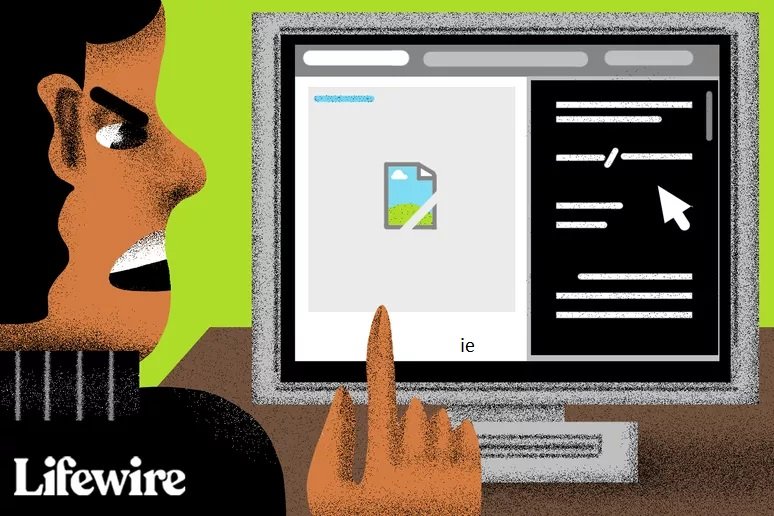An old man say’s that”a picture is worth a thousand words.”This watchword shines on the web, where attention spans are notoriously short — the right image can make or break a point by attracting the right attention and engaging runner callers.
Yet when a graphic fails to load, it makes the design look broken and, in some cases, can degrade the stoner experience on that point. The”thousand words”that the broken picture sends are clearly not positive bones!
1. Incorrect Train Paths
When you add images to a point’s HTML or CSS train, you must produce a path to the position in your directory structure where those lines live. This is law that tells the cyber surfer where to look for and cost the image from. In utmost cases, this would be inside a brochure named images.However, the images won’t load duly because the cyber surfer won’t be suitable to recoup the correct lines, If the path to this brochure and the lines inside of it are incorrect. It’ll follow the path that you told it to, but it’ll hit a dead end and, rather of display the applicable image, will come up blank.
Featured Videotape
2. Lines Names Misspelled
As you examine the train paths for your lines, corroborate that you spelled the name of the image rightly. Incorrect names or misspellings are the most common cause of image- lading problems.
3. Wrong Train Extensions
In some cases, you may have the name of the train rightly spelled, but the train extension may be incorrect. If your image is a. jpg train, but your HTML is looking for a. png, there will be a problem. Use the correct train type for each image and also reference that same extension in your website’s law.
Also, look for case perceptive. If your train ends with. JPG, with the letters all in caps, but your law references. jpg, all lowercase, certain web waiters see those two as being different, indeed though they’re the same sets of letters. Case perceptive counts.
It’s stylish practice to always save lines with all-lowercase letters. Doing so allows us to always use lowercase in our law, barring one possible problem we could have with our image lines.
4. Missing Lines
Still, and the name and train extension are also error-free, check that the lines have been uploaded to the web garçon, If the paths to your image lines are correct. Neglecting to upload lines to that garçon when a point is launched is a common mistake that’s easy to overlook.
Upload those images, refresh your web runner, and it should incontinent display the lines as anticipated. You can also try to cancel the image on the garçon Andre-upload it. Occasionally lines get corrupted during transfers (e.g., by textbook rather than double transfer during FTP), so this”delete and replace” system occasionally helps.
5. The Website Hosting the Images Is Down
You will typically host the images that your point uses on your own garçon, but in some cases, you may be using images that are hosted elsewhere.However, your images aren’t going to load either, If that point hosting the image goes down.
6. Transfer Problems
Whether an image train is loaded from an external sphere or from your own, there’s always a chance that there may be a transfer problem for that train when it’s first requested by the cyber surfer. This problem shouldn’t be a common circumstance (if it is, you may need to look for a new hosting provider), but it can be from time to time.
A common reason for this glitch is that the garçon is overwhelmed and can not serve all the runner means snappily enough before the request times out. You will see this problem more generally with cheaply provisioned virtual web waiters that struggle to handle more complicated, script-heavy sites.However, consider upgrading the garçon’s capabilities or find a new host, If this problem occurs constantly.
7. Database Problems
Ultramodern dynamic web operations, like WordPress, calculate on a database to store information about everything on a point, including the images.However, there is a chance that the database is passing some issue, If your point is failing to load images.
There are a bunch of ways database problems can be. Your operation might not indeed be connected to the database, because it’s either down or unobtainable on a different garçon. Commodity may have gotten corrupted on the database itself, or your database stoner information changed, logging you out. Indeed simple settings changes could spark unintended consequences that either alter the database or make it unobtainable. Check garçon logs to see if the database might be the malefactor.
A Many Final Notes
Consider the proper use of ALT markers and your website speed and overall performance.
ALT, or “ alternate textbook,” markers are what’s displayed by a cyber surfer if an image fails to load. They’re also an important element in creating accessible websites that can be used by people with certain disabilities. Every inline image in your point should have an applicable ALT label. Images applied with CSS don’t offer this trait.
Technical SEO, benefits, focus point and importance [updated]


Comments are closed.